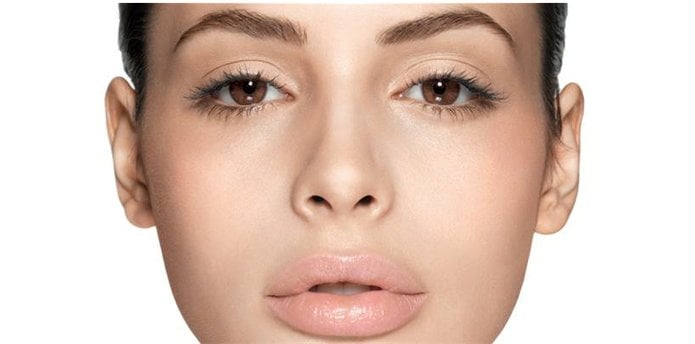Complete Foundation Makeup Guide for Beginners

When it comes to foundation, different skin types and concerns have very different needs. And when you have multiple options, tips, hacks, and foundation makeup application methods, it can get overwhelming to find the one that fits you. But not anymore!
Whether you are a makeup newbie or want to learn more about foundation, here is a guide to help you understand the A-Z of foundation makeup.
- What Is Foundation Makeup?: A base product that evens skin tone and creates a smooth canvas.
- What Are the Different Types Of Foundation?: Available in liquid, powder, cream, and stick formulas for different skin needs.
- How To Choose The Right Foundation?: Pick foundation based on undertone, finish, and coverage that suits your skin type.
- How To Apply Foundation?: Prep, prime, apply, blend, set, and finish with setting spray.
- Additional Tips on Foundation Makeup: Swatch on jawline; check for oxidation; blend foundation starting from the centre of face towards neck, jawline, and ears.
What Is Foundation Makeup?
Foundation is a base product that helps even out skin tone, camouflage imperfections, and create a smooth canvas for the rest of your makeup, enhancing your natural complexion.
What Are the Different Types Of Foundation?
Here are some of the most common types of foundation, based on their formula.
1. Liquid Foundation
Popular and versatile, liquid foundation comes in bottles or tubes, easily applicable, and blends smoothly. Liquid foundation makeup suits all skin types and allows easy mixing of shades to create a custom shade for your skin tone.
2. Powder Foundation
Powder foundation makeup is a finely milled, pigmented powder that offers a second skin finish, feels lightweight, and delivers an even full coverage result, making it ideal for oily or combination skin types.
Read our guide on Liquid Foundation Or Powder Foundation: Which One Should You Choose? to make the right purchase for your unique skin type.
3. Cream Foundation
Rich, thick, and moisturizing, cream foundations suit dry skin, offer high coverage, and leave a dewy finish.
4. Stick Foundation
Stick foundation makeup is available in solid form, making it an ideal travel-friendly makeup product. It packs a thick formula that delivers high coverage and doubles as a concealer. You must use stick foundation sparingly to avoid a cakey look.
How To Choose The Right Foundation?
Here’s a quick way to choose the right foundation for you:
| Category | Type | Key Features | Best For / Example |
| Shade & Undertone | Warm Undertone | Skin shows yellow or golden hues | Warm skin tones |
| Cool Undertone | Skin shows pink, blue, or purple hues | Cool skin tones | |
| Neutral Undertone | Mix of warm and cool hues | Neutral skin tones | |
| Testing Methods | Check veins, test jewellery, compare with white paper | Helps determine undertone | |
| Finish | Dewy Foundation | Radiant, glowing look; natural shine; makes skin look soft & youthful | Best for dry skin |
| Matte Foundation | Little/no shine; minimizes pores | Best for oily skin | |
| Satin Foundation | Between dewy & matte; refines pores; light radiance | Suitable for normal/combination skin | |
| Radiant/Luminous Finish | Brightens complexion; light-reflecting pigments; healthy glow | Ideal for dull or tired-looking skin | |
| Coverage | Sheer/Light Coverage | Low pigmentation, skin peeks through, natural finish | For minimal blemishes/discoloration |
| Medium Coverage | Buildable opacity, maintains skin-like finish; can be layered | Best for soft makeup | |
| Full Coverage | High pigmentation, hides imperfections, flawless finish | Ideal for glam makeup |
Read our guide on How To Determine Your Undertone Before Finding Your Foundation Shade to know more about the nuances of foundation makeup.
How To Apply Foundation?
Here’s a step-by-step guide on how to apply foundation on face:
Step 1
Wash your face using a gentle cleanser and apply moisturizer as you would normally do. Wait for around 5 – 10 minutes before you start doing your makeup.
Step 2
Apply a lightweight primer to create a smooth canvas for your foundation makeup and make it long-lasting. Use a pore filling and blurring primer for oily skin and a hydrating primer for dry skin.
Step 3
Apply a few dots of foundation to the center of your face, forehead, nose, and chin. Blend outwards with a brush, sponge or fingertips. Build intensity if needed. Blend using small motions. Avoid dragging the brush or sponge to prevent streaks.
Step 4
Apply concealer to cover imperfections, pigmentation, or scars. You can apply concealer or foundation first, depending on the intensity of pigmentation or the coverage you want.
Step 5
Wait for the foundation to dry before setting it with powder. If you have dry and flaky skin, we advise you to skip this step. Once you are done applying the rest of your makeup, lock everything in place using a transfer-proof makeup setting spray.
For further assistance, take a quick look at our beginner’s guide on How To Apply Foundation On Face and be a base makeup pro.
Additional Tips on Foundation Makeup
Here are some expert-approved tips for finding your perfect foundation, blending techniques, and more!
- When buying foundation, swatch the different shades along your jawline or from your cheek to your neck to ensure you get the perfect shade match.
- When finding a foundation match, wait for around 5-10 minutes after swatching to make sure the foundation does not oxidise, turn darker or more orange. The ideal foundation retains its colour even after a few minutes.
- Always blend your foundation down to your neck to avoid a harsh foundation line along your jawline. And don’t forget your ears!
Start your journey of becoming a foundation makeup pro with this comprehensive guide. Read through this quick crash course and get answers for all your queries – ‘what is foundation makeup?’, ‘what are the types of foundation makeup’, ‘how to choose foundation?’ ‘how to apply foundation?’, and more!
Still not able to find your foundation shade? Don’t hesitate to use the Foundation Shade Finder tool to find your ideal shade in just a few clicks. Browse through the Virtual Try-On tool to try out various face makeup, eye makeup, and lip makeup products from the comfort of your home, without any commitments.



